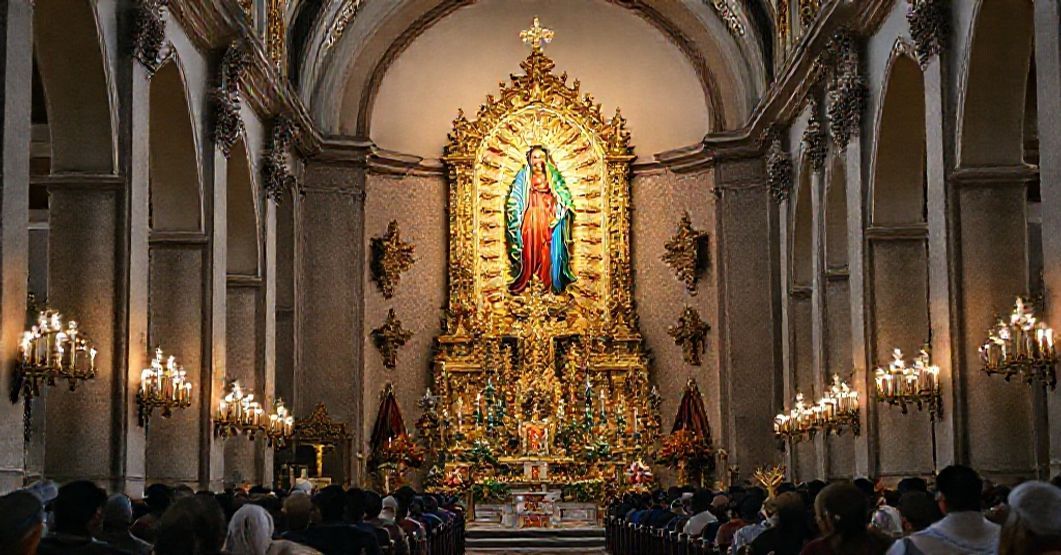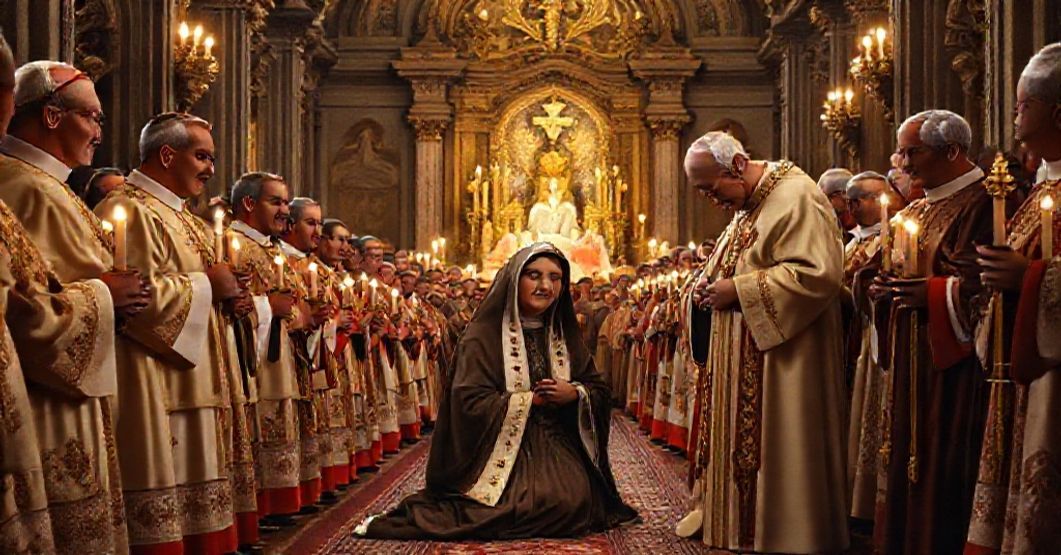Antipopes of the Antichurch



















Timeline of this heretical pontiff
Encyclical Letters
+ 15 posts1959
+ 7 posts1961
+ 4 posts1962
+ 2 posts1963
+ 2 postsApostolic Exhortations
+ 3 postsApostolic Constitutions
+ 93 posts1958
+ 6 posts1959
+ 87 postsMotu Proprio
+ 15 posts1958
+ 1 posts1959
+ 1 posts1962
+ 11 postsApostolic Letters
+ 151 posts1958
+ 4 posts1959
+ 63 posts1960
+ 78 posts1961
+ 1 posts1962
+ 4 posts1963
+ 1 postsSpeeches
+ 99 posts1958
+ 2 posts1959
+ 26 posts1960
+ 29 posts1961
+ 16 posts1962
+ 24 postsMessages
+ 6 posts1959
+ 4 postsHomilies
+ 4 postsLetters
+ 152 posts1958
+ 1 posts1959
+ 48 posts1960
+ 32 posts1961
+ 31 posts1962
+ 30 posts1963
+ 10 postsNot categorized
+ 1 posts1958
+ 1 postsNews feed


MARIANI CULTUS (1959.05.02)
The document attributed to John XXIII, titled “Mariani cultus,” is a Latin apostolic letter by which he confers the title and privileges of a minor basilica on the church of the Blessed Virgin Mary “Del Quinche” in the Archdiocese of Quito. It recounts the antiquity and architectural beauty of the sanctuary, the intensity of local Marian devotion, the supposed miracles depicted there, the pastoral care by clergy entrusted with the shrine, and on this basis grants juridical-liturgical distinctions and associated privileges to the temple.
Already in this apparently pious administrative act, the conciliar usurper manifests the juridical presumption and theological deformation of the emerging neo-church: a Marian varnish covering the systematic destruction of the Kingship of Christ and the subordination of true worship to a counterfeit magisterium.


Renovans Faciem (1959.04.26)
The document “Renovans faciem” (26 April 1959) is presented as an Apostolic Letter of John XXIII, declaring the Lucchese nun Helena Guerra, foundress of the Oblates of the Holy Spirit (Sisters of St Zita), as “Blessed,” extolling her alleged virtues, her promotion of devotion to the Holy Ghost, her Marian and Eucharistic piety, her charitable works, and her influence on Leo XIII’s initiatives regarding the Holy Spirit, and granting a limited liturgical cult in her honour.


Materna caritas (1959.04.12)
The document “Materna caritas” is a decretal letter issued in 1959 by John XXIII, formally declaring the canonization of Joaquina de Vedruna de Mas, foundress of the Carmelites of Charity, based on an outline of her life, virtues, and alleged miracles, and inscribing her in the catalogue of saints with universal cult. It exalts her “maternal charity,” her work for the sick and poor, the foundation and expansion of her institute, and the processes leading from beatification to canonization under Pius XI and Pius XII, culminating in John XXIII’s solemn definition.


Quantum dilectionis (1959.04.10)
John XXIII’s apostolic letter “Quantum dilectionis” (10 April 1959) proclaims Gabriel of Our Lady of Sorrows as principal heavenly patron of the Abruzzi region, extolling his cult, pilgrimages to his shrine at Isola del Gran Sasso, the role of the Passionist congregation, and conferring corresponding liturgical rights and privileges, all under the self-asserted plenitude of apostolic power of the newly elected conciliar usurper. In reality, this short document is a precise early specimen of the pseudo-magisterium of the nascent conciliar sect: pious in vocabulary, but operating as a juridical and spiritual counterfeit erected on a usurped authority and instrumentalizing authentic pre-1958 sanctity to legitimize the coming revolution.
Varia
Announcement:
– News feed –implemented
– Antipopes separate web sites with their all documents refutation – in progress
